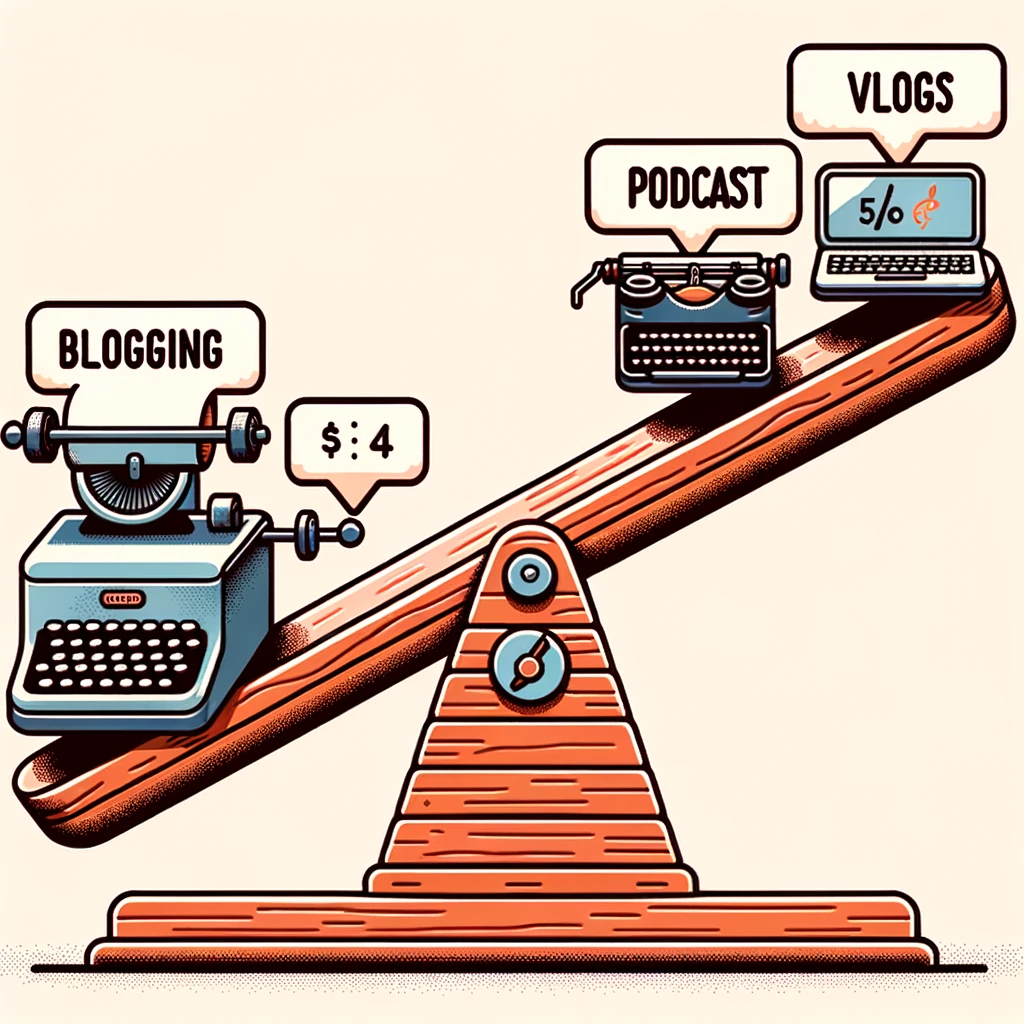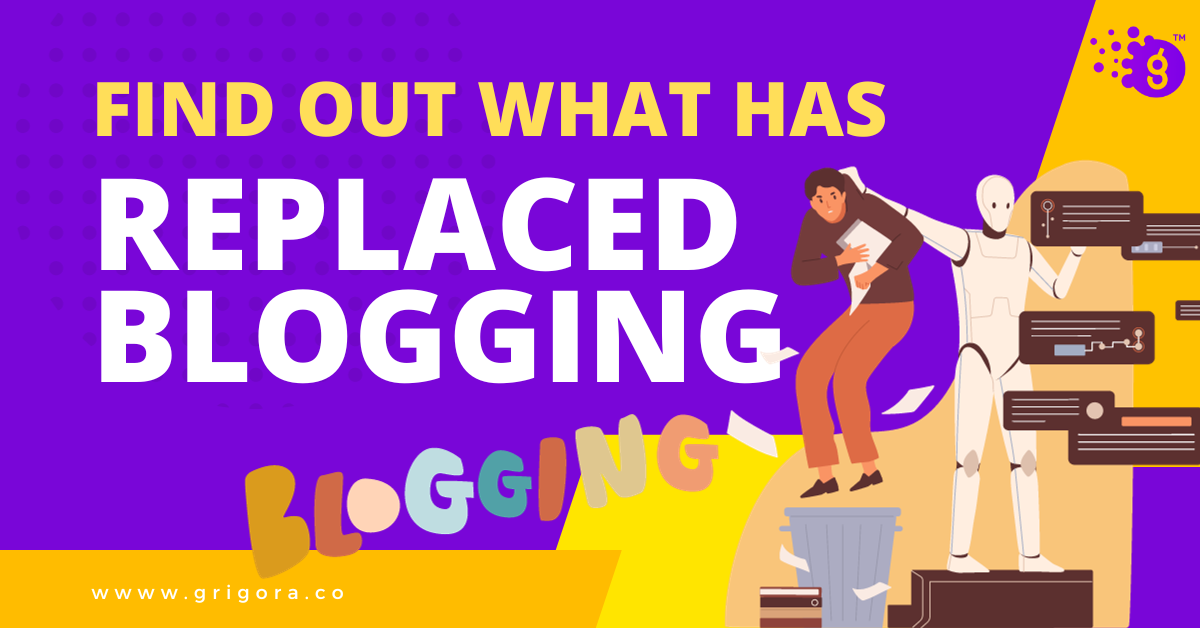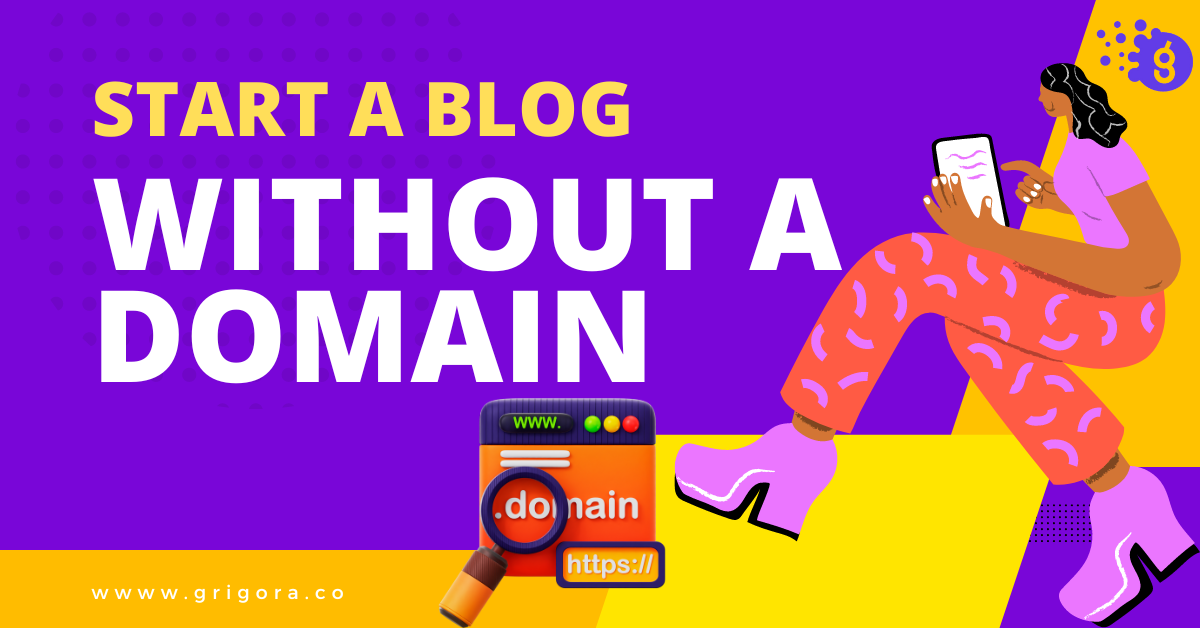Introduction
The only constant in life is change.
Heraclitus
The Genesis of Blogging
In the early 2000s, blogging emerged as a revolutionary way for individuals to express themselves, share expertise, and connect with like-minded people. It democratized the publishing world, allowing anyone with a computer and an internet connection to become a writer, journalist, or critic. Blogging platforms like WordPress and Blogger facilitated this movement, offering user-friendly interfaces for people to publish their thoughts.
The Need for Evolution
As the saying goes, change is the only constant. While blogging has had a significant impact, it's important to recognize that the digital landscape is ever-evolving. New technologies, platforms, and consumer behaviors have necessitated a shift in how we create and consume content.
Scope of the Article
This article aims to explore what has replaced blogging—or rather, what has evolved alongside it—to meet the changing needs and preferences of modern audiences. We'll delve into various forms of content creation, from social media microblogging to video content, podcasts, and more.
The Traditional Blogging Landscape
The Golden Era of Blogging
Personal Blogs
Personal blogs served as online diaries, allowing individuals to share their lives, thoughts, and experiences with a global audience. Platforms like WordPress and Blogger were the go-to choices for personal blogging, offering various themes and customization options.
Niche Blogs
Niche blogs focused on specialized topics, ranging from travel and food to technology and fashion. These blogs often became authoritative sources of information, attracting a dedicated following of readers interested in those specific subjects.
Corporate Blogs
Corporate blogs emerged as a tool for businesses to establish thought leadership and connect with their customer base. These blogs often featured industry insights, product updates, and other content aimed at building brand authority.
The Downfall
Content Saturation
The blogosphere became increasingly crowded, leading to an oversaturation of content. Readers were overwhelmed with choices, making it difficult for new or lesser-known blogs to gain visibility.
Audience Fatigue
As the volume of content increased, reader engagement began to decline. The abundance of similar content led to audience fatigue, as readers found it challenging to sift through the noise to find quality content.
Technological Limitations
Traditional blogging platforms lacked features that could facilitate real-time interaction and updates. This limitation made blogs less dynamic compared to emerging platforms, which offered more interactive forms of content.
The New Kids on the Block
Microblogging: The Social Media Revolution
Twitter revolutionized the way we consume news and engage in real-time discussions. With its 280-character limit, Twitter encourages concise and impactful messaging, making it a go-to platform for news updates, trending topics, and social commentary.
Instagram shifted the focus from text-based content to visual storytelling. With features like Stories, IGTV, and Reels, Instagram offers a variety of formats for creators to engage with their audience in a more dynamic way.
LinkedIn has evolved from a professional networking site to a platform for sharing industry insights and thought leadership. It allows professionals to publish articles, share updates, and engage with a network that is more career-focused.
Video Content: Show, Don't Tell
YouTube
YouTube has become the second-largest search engine in the world, offering a platform for long-form video content across all genres. From tutorials and reviews to vlogs and documentaries, YouTube provides a space for in-depth storytelling.
TikTok
TikTok has taken the world by storm with its short, engaging video format. The platform encourages creativity and virality, often setting trends that spill over into other social media platforms.
Instagram Reels
Instagram Reels is Instagram's answer to TikTok, offering quick bites of entertainment in a short video format. It allows creators to reach new audiences and offers a fresh way to engage with existing followers.
Podcasts: The Rise of Audio Content
Why Podcasts?
Podcasts offer the appeal of audio content, allowing consumers to multitask or consume content on the go. They have become a popular medium for in-depth discussions, interviews, and storytelling.
Popular Platforms
Spotify and Apple Podcasts are leading the way in podcast distribution, offering a wide range of content across various genres. These platforms provide creators with analytics and monetization options, making it easier to reach and engage with their audience.
Monetization
Sponsorships and listener support have become popular monetization strategies for podcasters. Platforms often offer built-in features for ads and listener donations, providing a viable revenue stream for creators.
The Age of Interactivity
Live Streaming: Real-Time Engagement
Twitch
Twitch has become synonymous with live streaming, particularly in the gaming community. Beyond gaming, Twitch also hosts streams related to music, art, and even casual chats, allowing for real-time interaction between streamers and their audience.
YouTube Live
YouTube Live extends the platform's video capabilities to live streaming, offering webinars, live shows, and real-time Q&A sessions. It provides an opportunity for creators to engage with their audience in a more immediate and interactive manner.
Instagram Live
Instagram Live offers a more casual and intimate form of live streaming. It's often used for Q&A sessions, product launches, or simply to engage with followers in real-time.
Online Communities: Niche and Specialized
Reddit, often called 'the front page of the internet,' hosts a wide range of communities focused on various topics. From news and politics to hobbies and entertainment, Reddit offers a platform for in-depth discussions and content sharing.
Discord
Discord started as a platform for gamers but has evolved into a space for various communities to interact in real-time. It offers text, voice, and video channels, making it a versatile platform for community building.
Facebook Groups
Facebook Groups provide closed communities where people can share content and engage in discussions based on shared interests. These groups often have moderators and community guidelines to ensure a safe and focused environment.
Collaborative Content: Two Heads are Better Than One
Medium
Medium offers a platform for writers to publish articles and essays, often benefiting from shared audiences and a built-in clapping feature to gauge engagement. It's a space for co-creation and collaborative storytelling.
Guest Blogging
Guest blogging allows writers to contribute to other blogs or platforms, thereby reaching a new audience while offering fresh content to the host site. It's a win-win situation for both parties involved.
Vocal Media
Vocal Media is another platform that encourages storytelling and community feedback. It offers a variety of communities where creators can publish their stories and engage with readers.
Modern Solutions for Content Creation

Introducing Grigora
Why Grigora?
Grigora stands out as a transformative solution in the digital evolution of content creation. Unlike traditional blogging platforms, Grigora offers a more comprehensive suite of tools for modern creators. It empowers users to not just blog, but to build entire websites tailored to their needs.
Features
Grigora boasts a user-friendly interface, extensive customization options, and robust security measures. These features make it an ideal choice for anyone looking to create and manage content effectively online.
Use Cases
Grigora serves a wide range of users, from personal bloggers and small businesses to artists, educators, and more. Its versatility makes it a one-stop-shop for various content needs, be it a portfolio, an online store, or a digital magazine.
Getting Started
Creating your own Grigora site is a straightforward process, designed to be accessible even for those with limited technical skills. The platform offers step-by-step guides and customer support to help you get your site up and running.
Monetization Strategies
Subscription and Paywalls
Patreon
Patreon has emerged as a popular platform for creators to receive financial support directly from their fans. Users can offer exclusive content, merchandise, or other perks to their patrons in exchange for monthly subscriptions.
OnlyFans
OnlyFans allows creators to offer exclusive content behind a paywall. It has gained notoriety for adult content but is also used by artists, chefs, and other creators to monetize their skills.
Premium Newsletters
Platforms like Substack and Mailchimp enable creators to send premium newsletters to paying subscribers. This model allows for direct monetization of specialized content, from industry insights to creative writing.
Sponsored Content and Partnerships
Influencer Marketing
Brands often collaborate with influencers to reach a wider audience. These partnerships can be lucrative for creators, especially those with a large and engaged following.
Native Advertising
Native advertising involves creating content that seamlessly integrates with the platform it's presented on, but is labeled as 'sponsored.' This form of advertising is less intrusive and can be more effective than traditional ads.
E-commerce and Affiliate Marketing
Shoppable Posts
Platforms like Instagram and Pinterest allow for 'shoppable posts,' where users can purchase products directly from the post. This feature enables seamless integration of e-commerce into content platforms.
Affiliate Links
Affiliate marketing involves promoting products and earning a commission on sales generated through a unique referral link. Websites and blogs often use this strategy to monetize their content, and it can be particularly effective for review and recommendation sites.
Conclusion
The Coexistence of Old and New
Blogging is not dead; it has simply evolved and diversified. The digital landscape now offers a plethora of platforms and formats, each with its own unique advantages and challenges.
The Future is Hybrid
The future of content creation lies in a hybrid approach that leverages multiple platforms for maximum re ach and engagement. From traditional blogs and social media to video content and podcasts, creators have more tools at their disposal than ever before.
Why Grigora is the Future
Grigora stands as a transformative platform that unlocks endless possibilities for creativity, growth, and success. With its user-friendly interface, extensive customization options, and robust security measures, Grigora is well-equipped to meet the diverse needs of modern content creators.
FAQs
Is Blogging Dead?
No, blogging is not dead. It has evolved to coexist with other forms of content creation, each serving different audience needs and preferences.
What Platform is Best for My Needs?
The 'best' platform depends on your specific goals, audience, and content type. Grigora offers a versatile solution for a wide range of use cases, from blogging and e-commerce to portfolios and more.
How Do I Monetize New Forms of Content?
Monetization strategies vary by platform and content type. Options include subscriptions, sponsored content, and affiliate marketing, among others.
What Skills Do I Need for Modern Content Creation?
In addition to writing, modern content creators often need skills in video production, social media management, and basic SEO.



